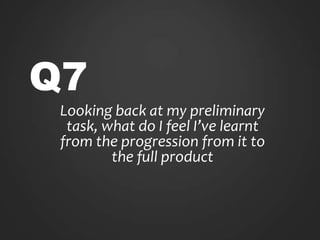The student reflects on their learning experience in a media studies course. They began the course unsure of their direction as an artist, but through completing preliminary tasks like a continuity piece and opening sequence, they gained technical skills and confidence. Mistakes made in the continuity piece helped them improve for the opening sequence. Research expanded their theoretical understanding, and the production process helped them value all roles in filmmaking. Overall, the student feels they have grown as both an artist and a person, and can now appreciate film with a trained eye.


















